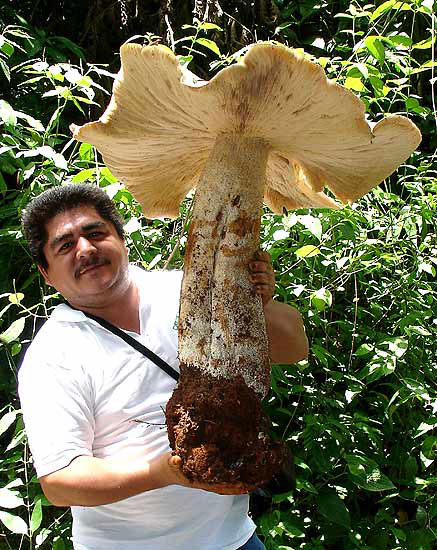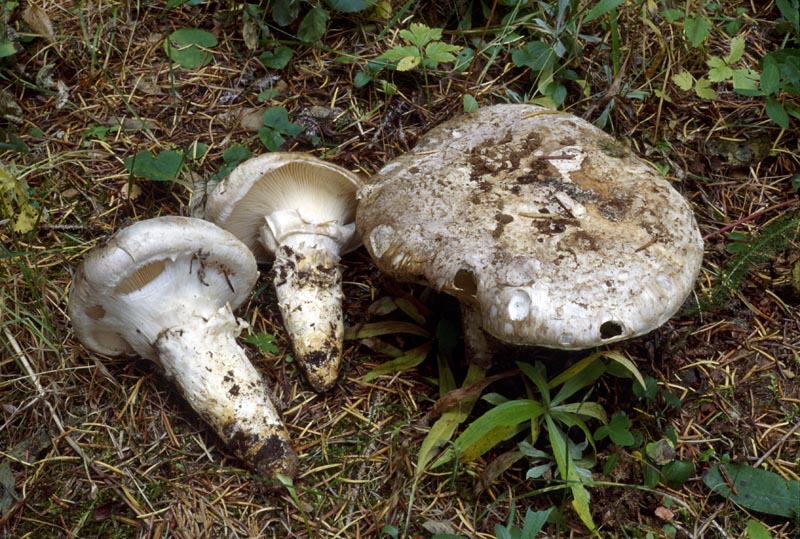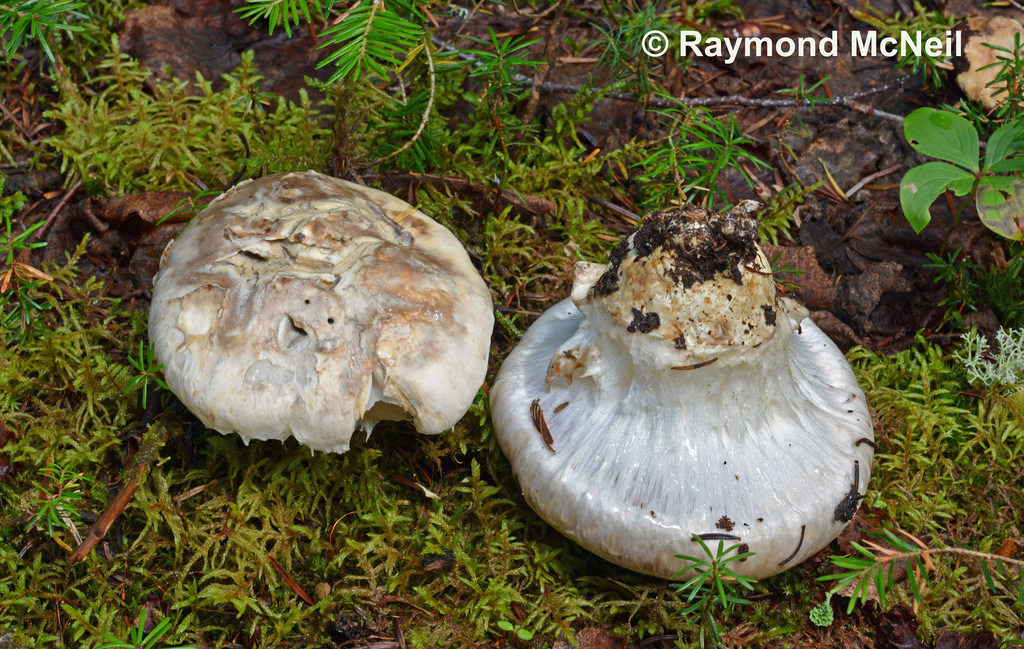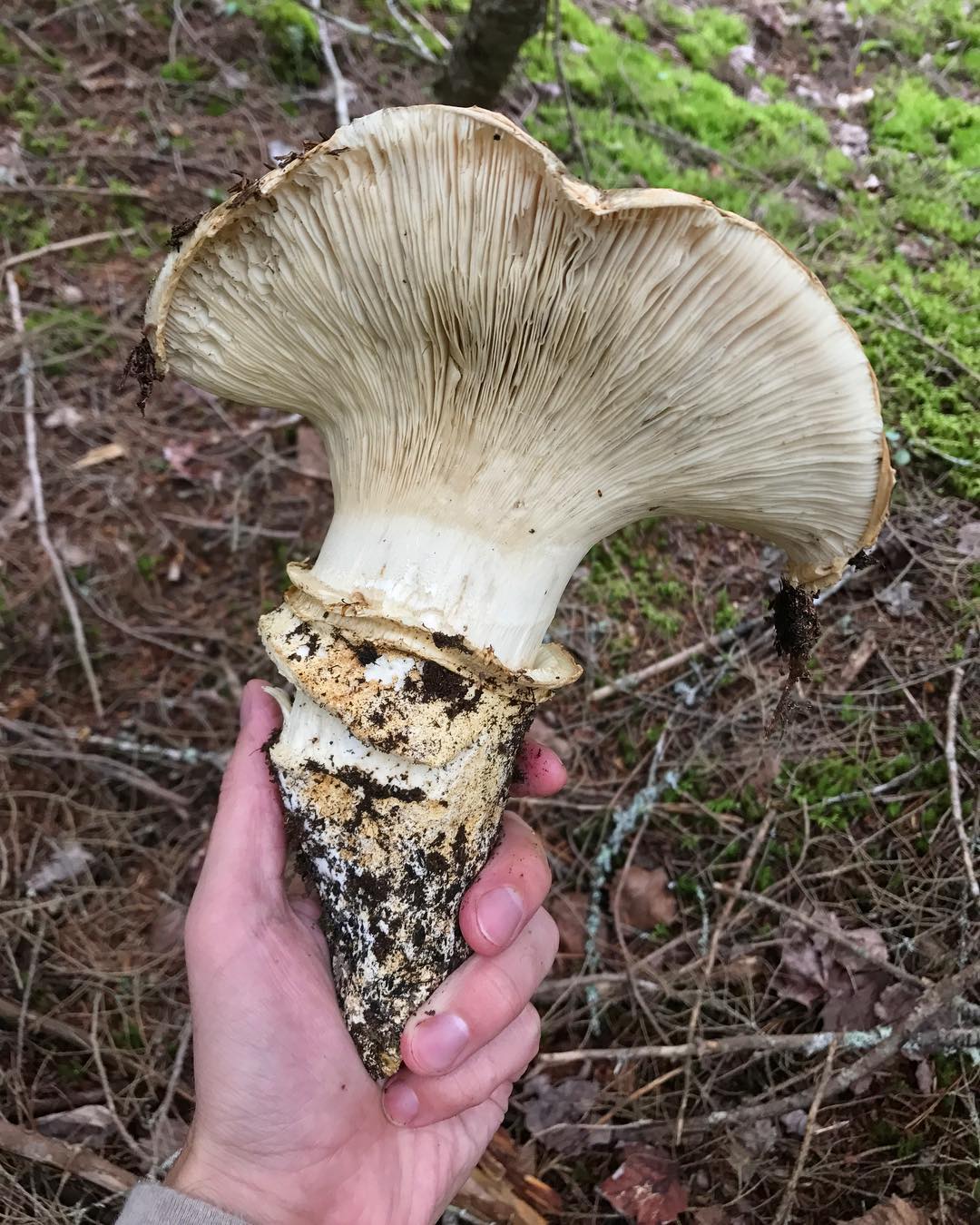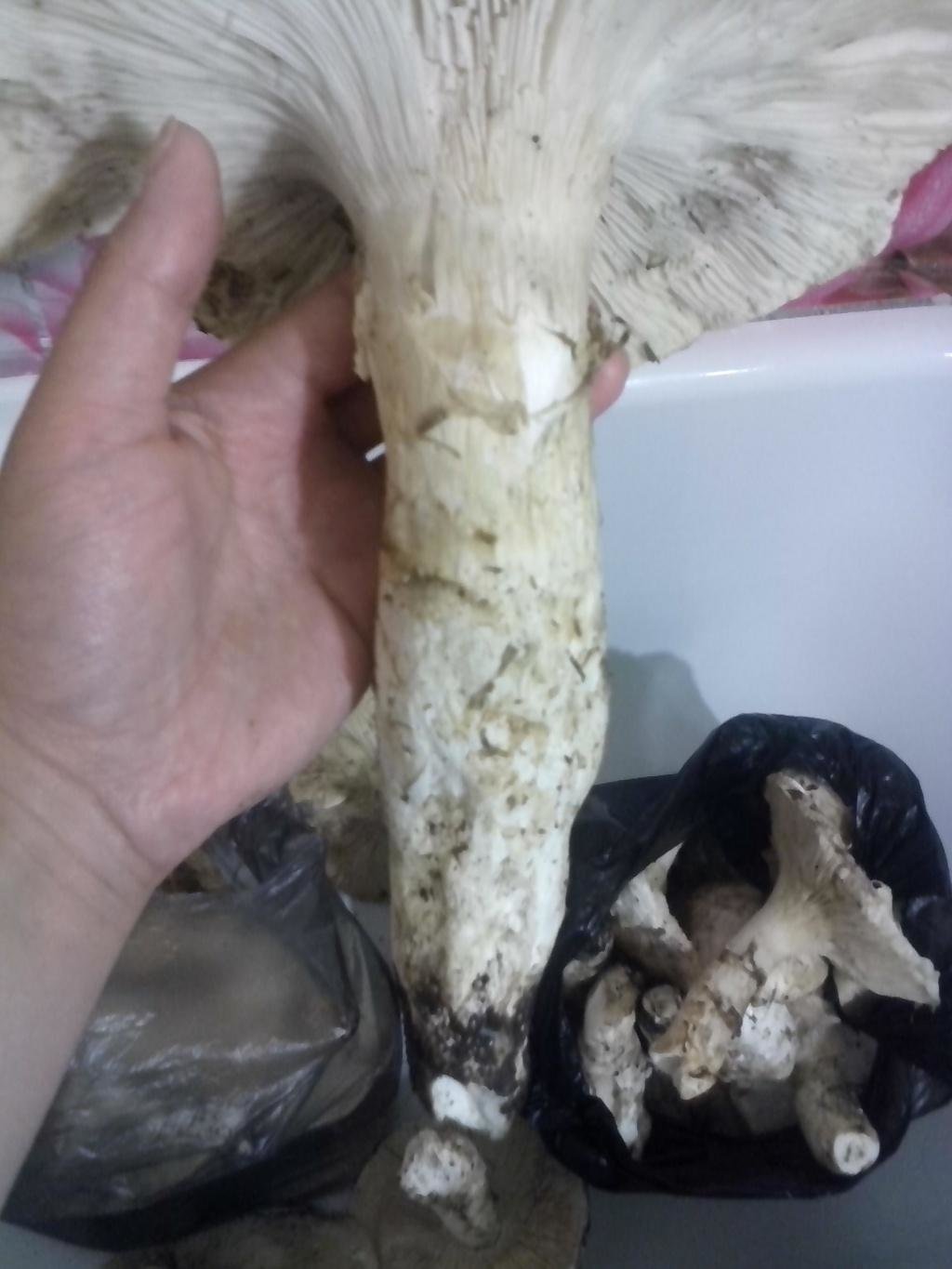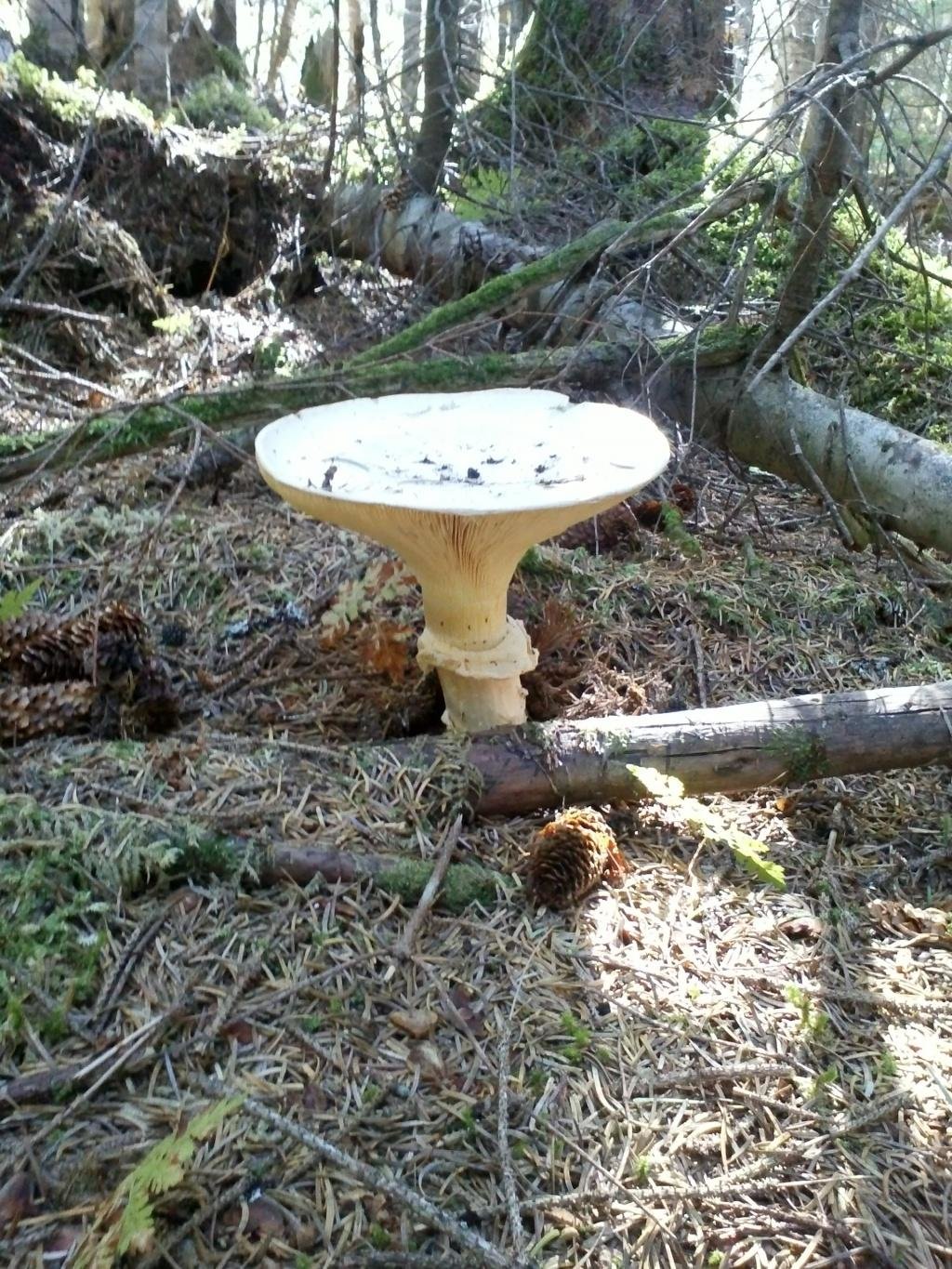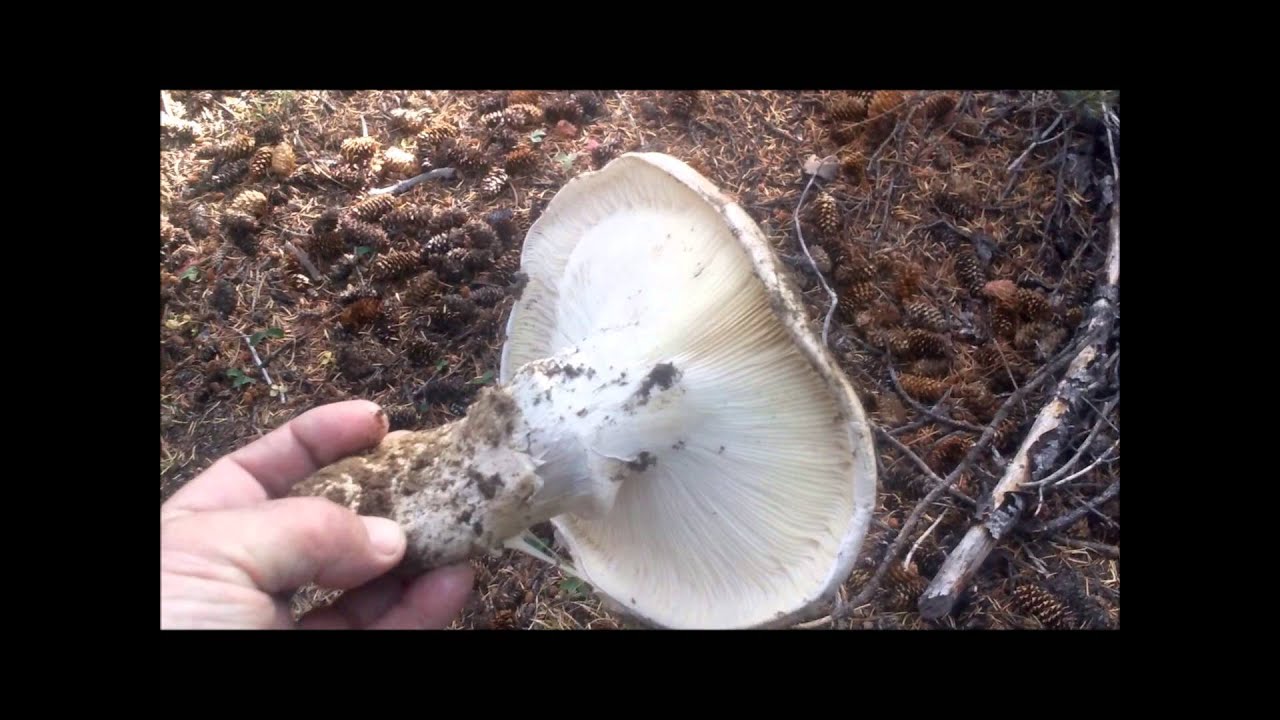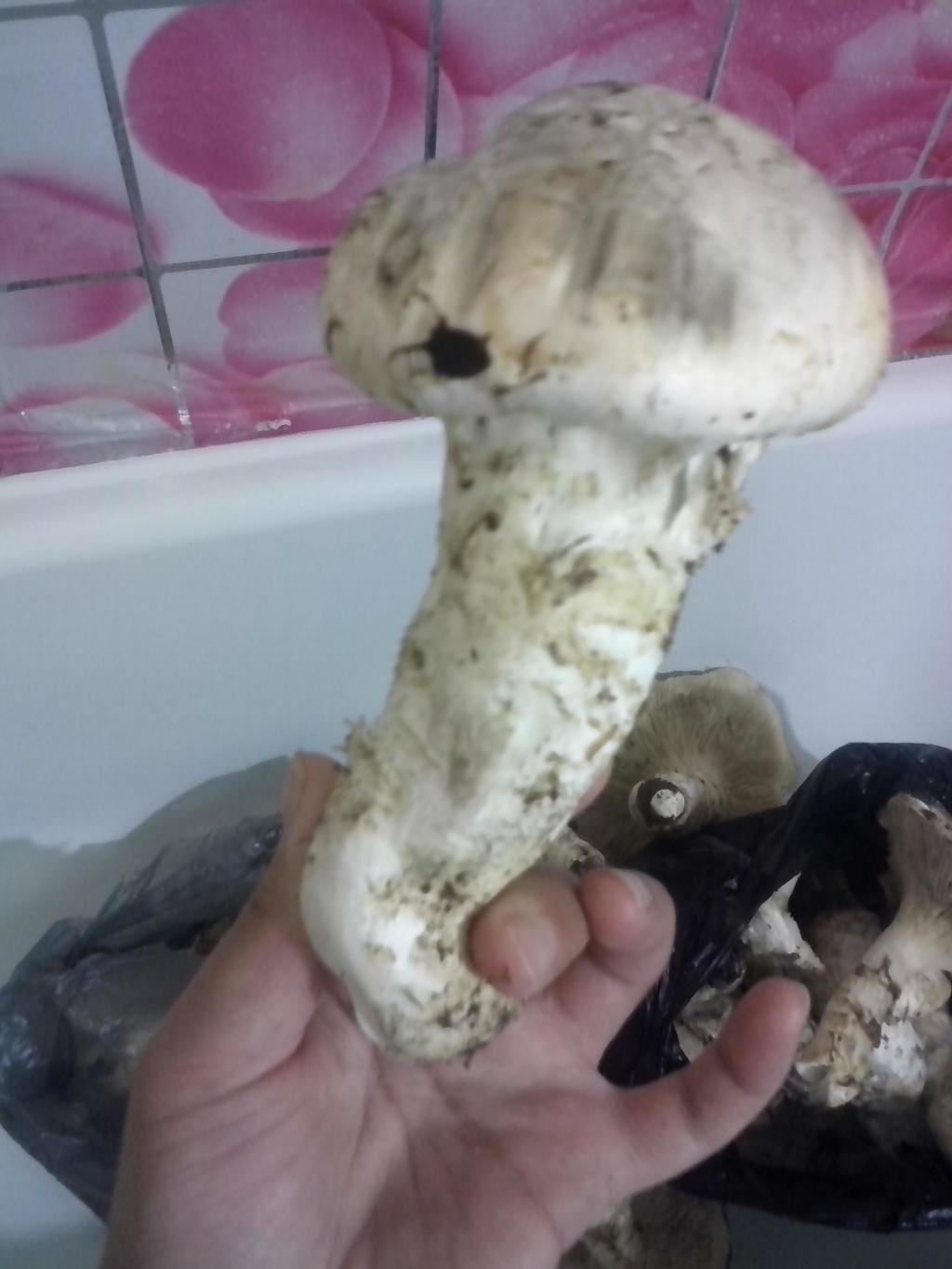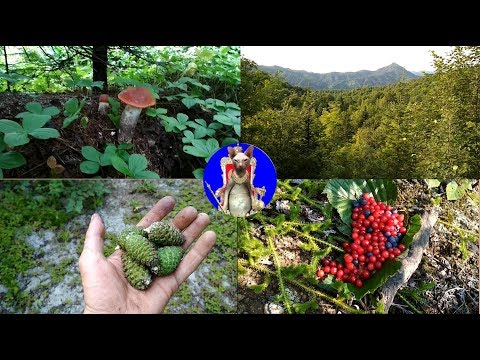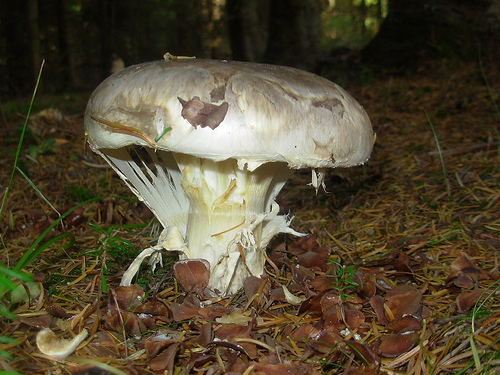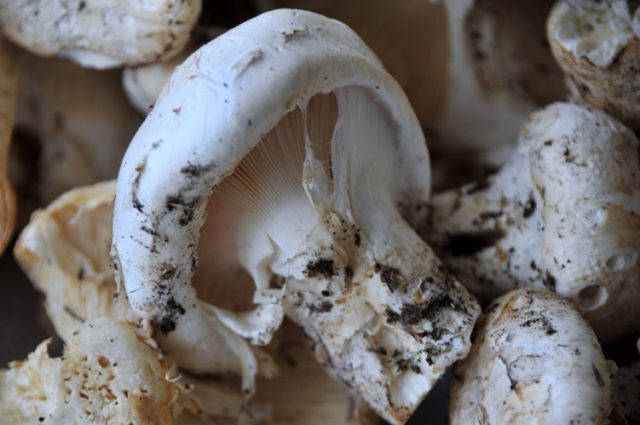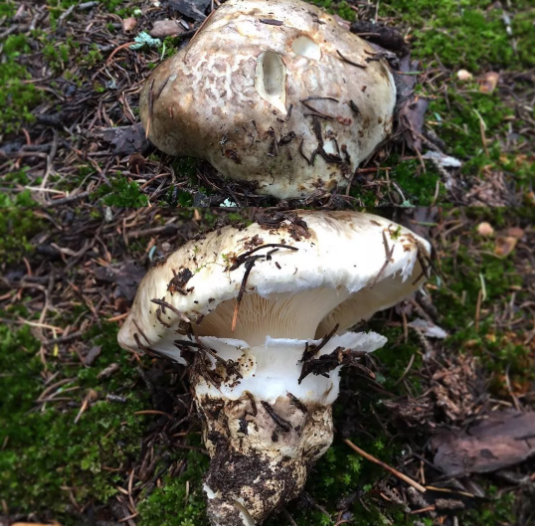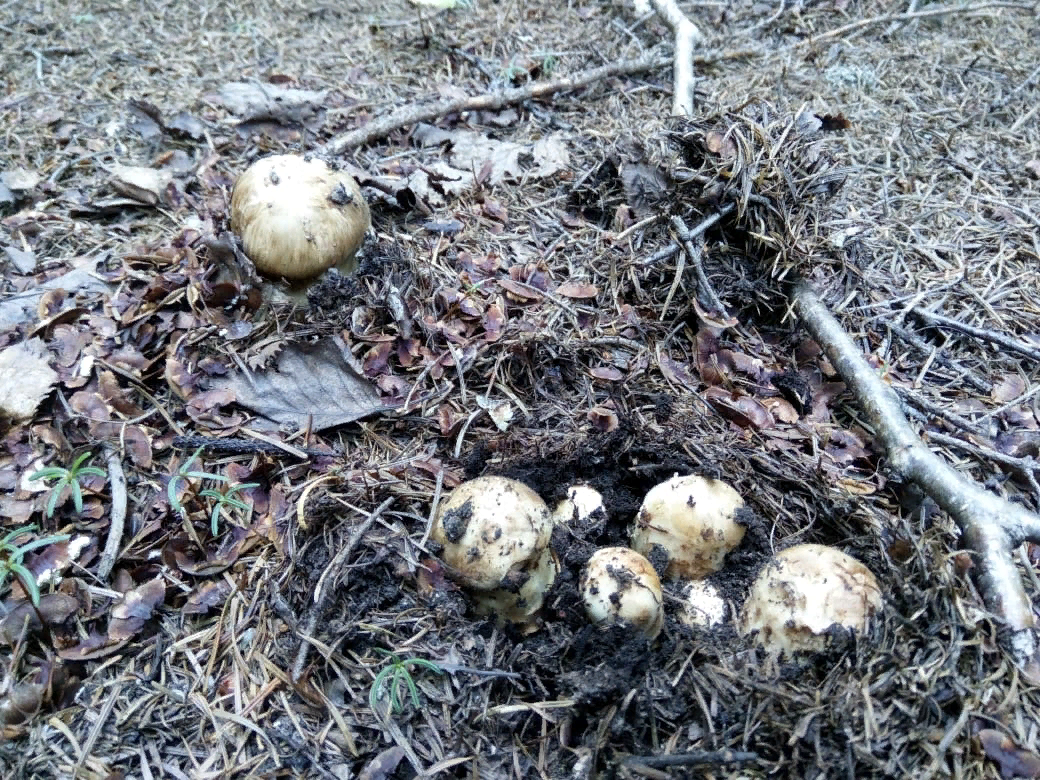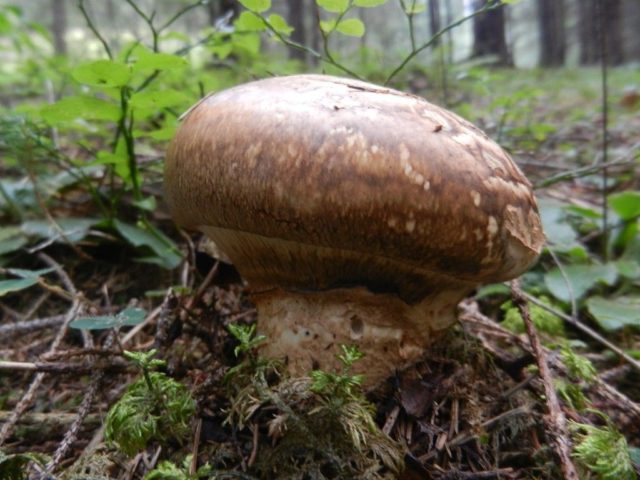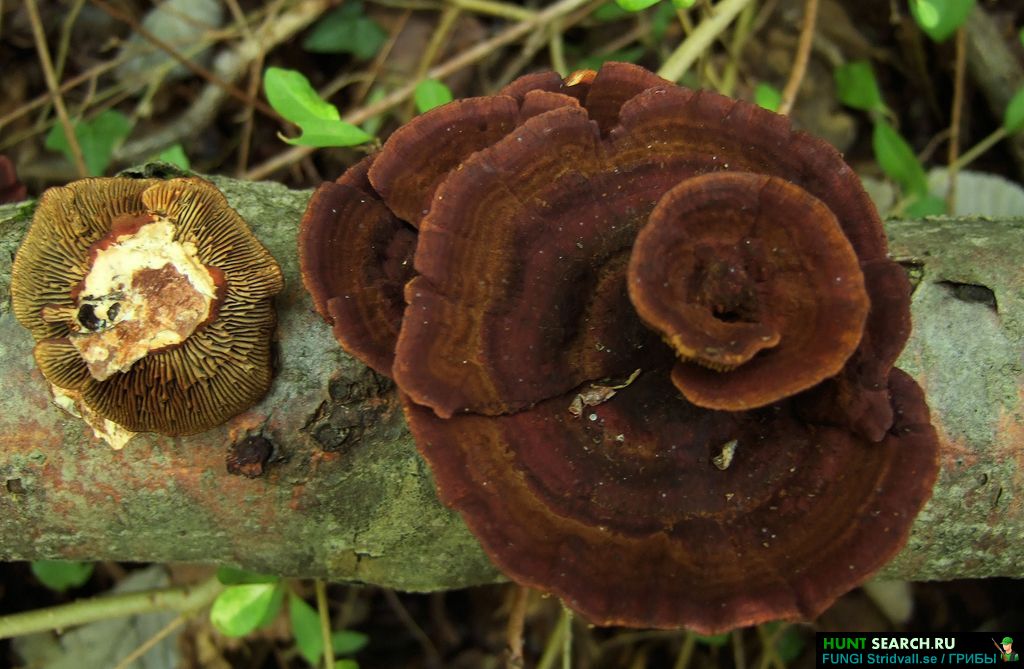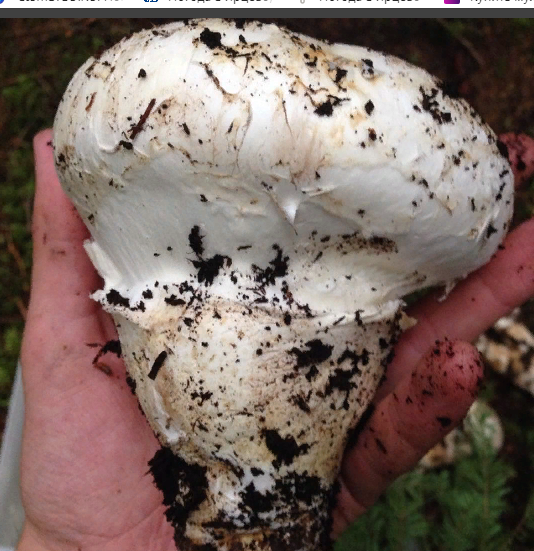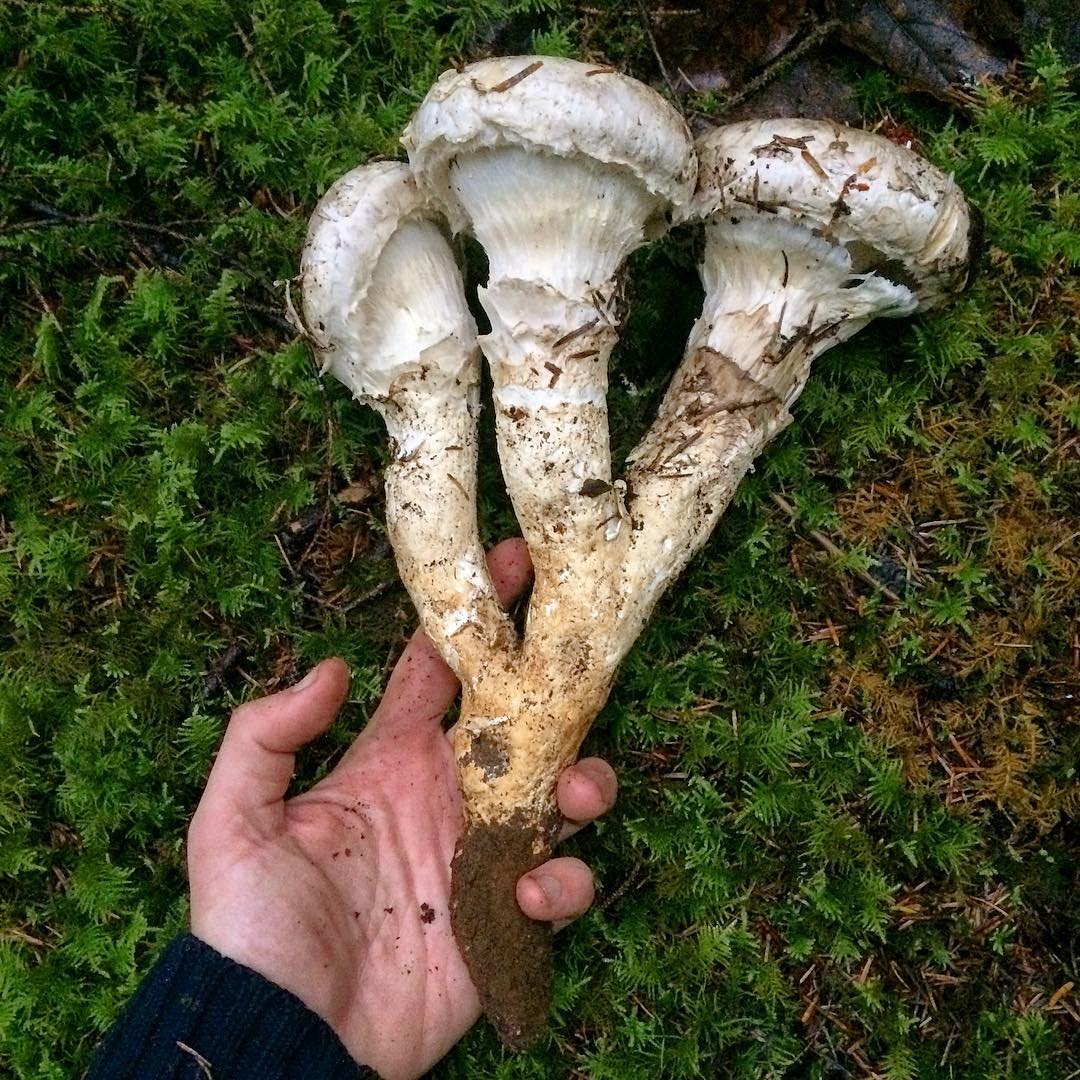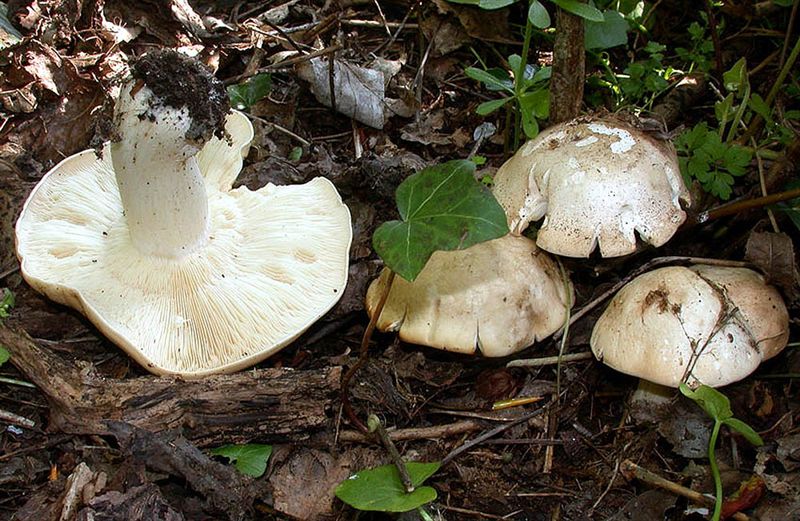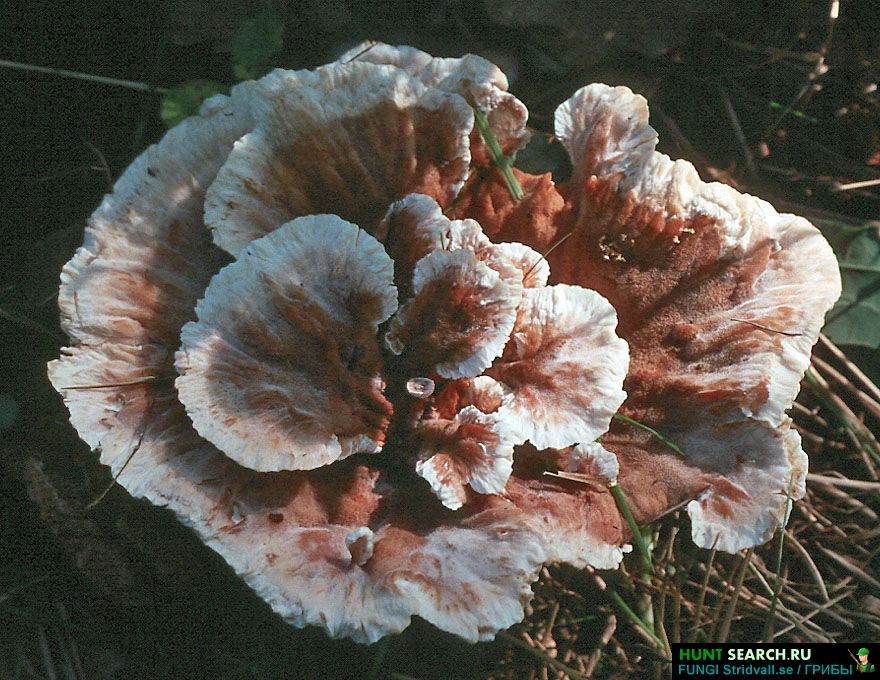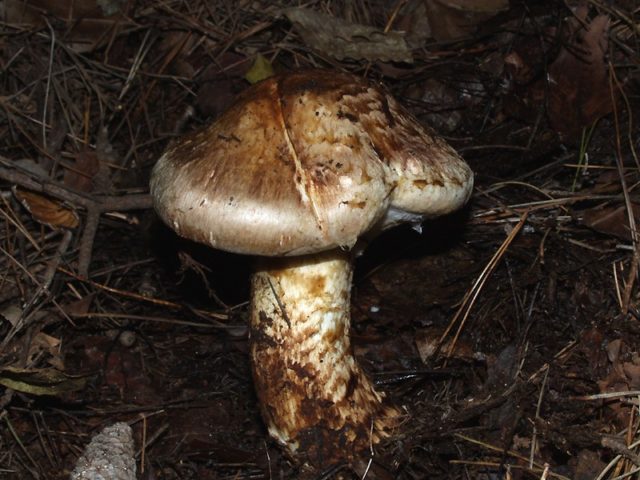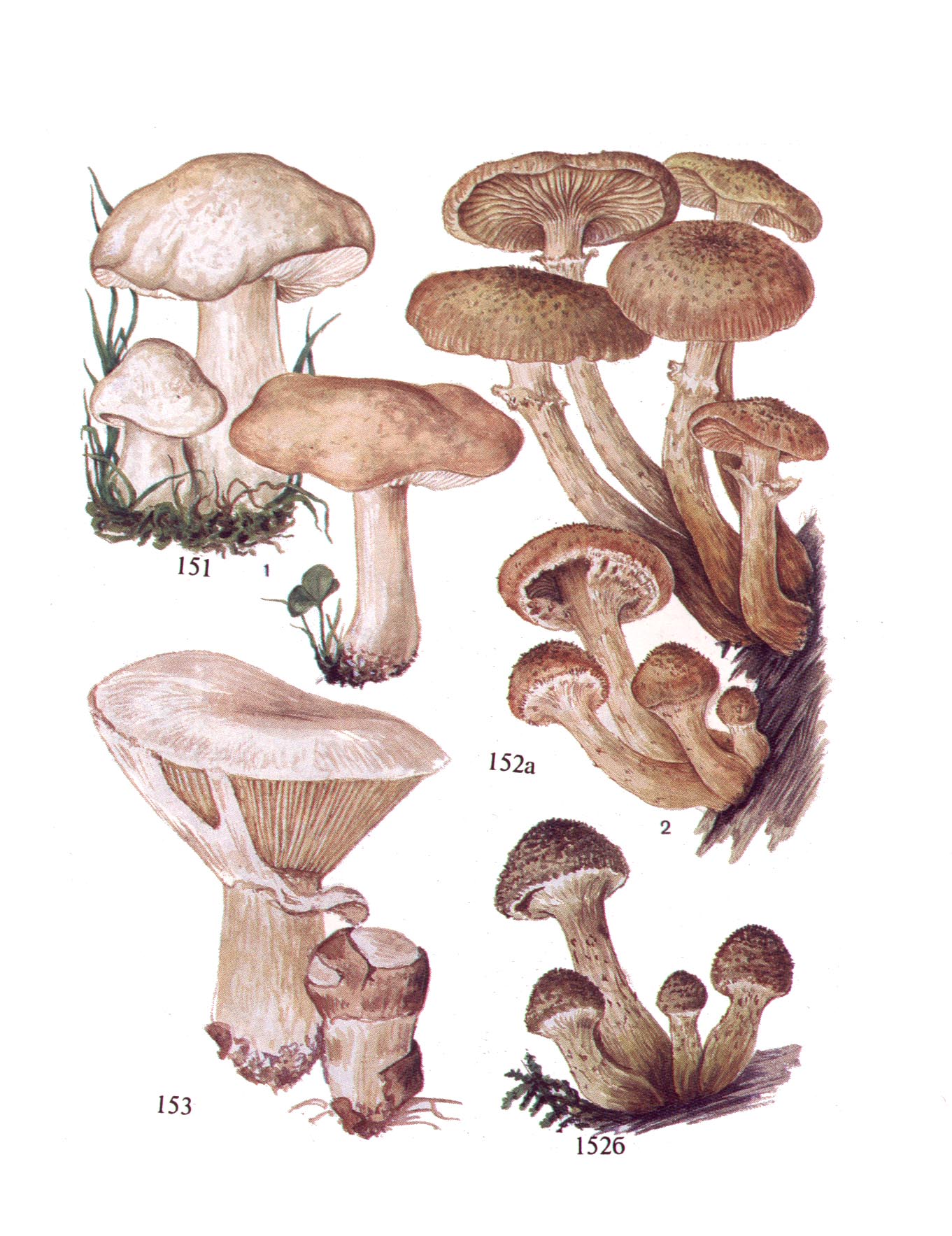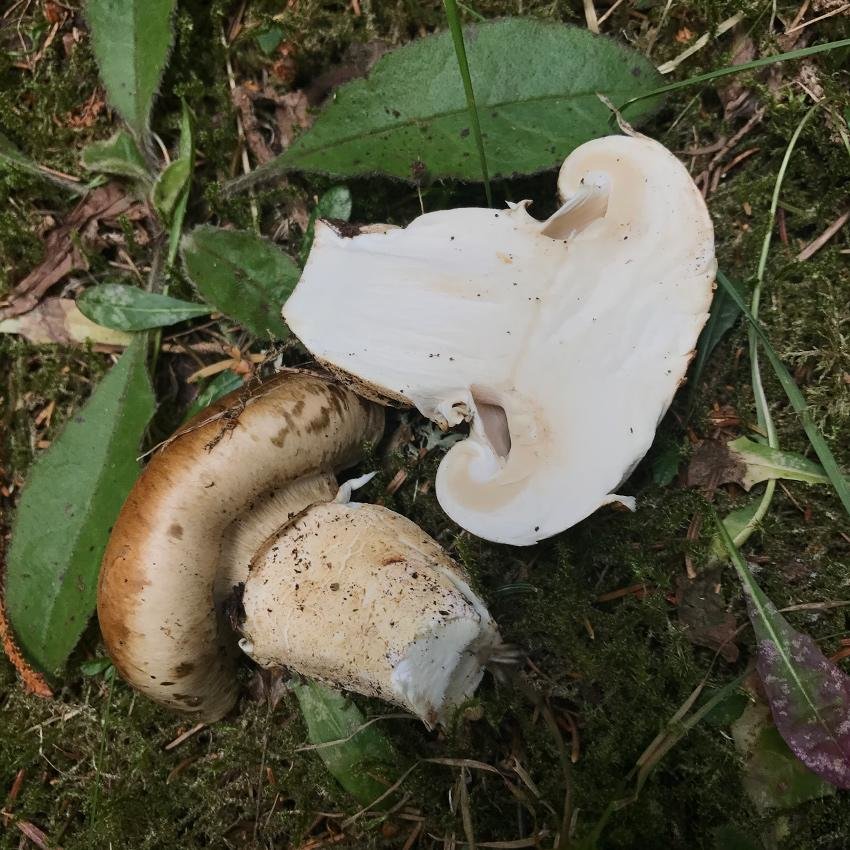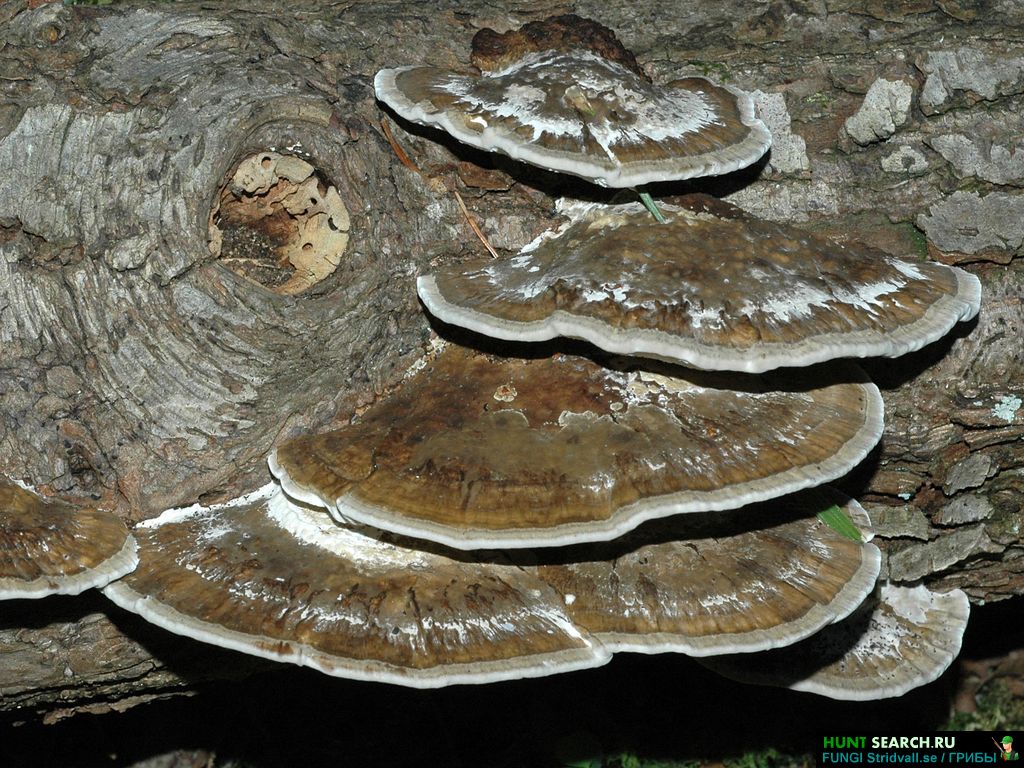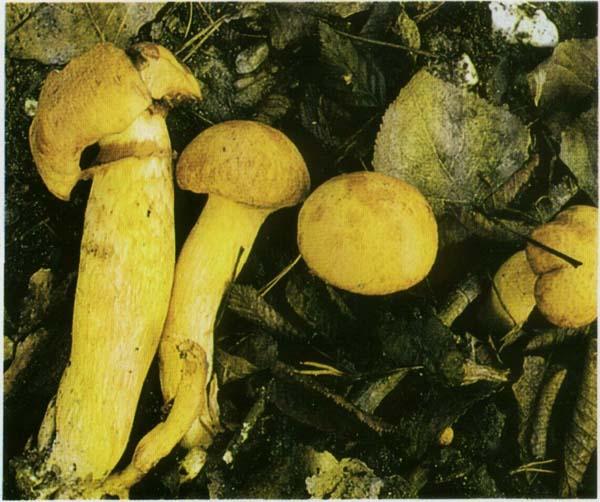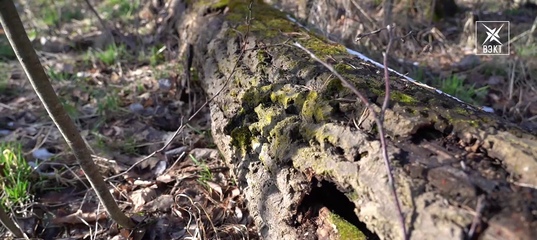Sakhalin champignon (Catathelasma ventricosum)
or
Sakhalin champignon
Sakhalin champignon - grows in summer and autumn in coniferous forests. On the territory of Russia, it is found in coniferous and mixed forests of the Far East. This mushroom often has characteristic gray spots on its whitish cap. Creeping plates, a rather large hanging double ring on the leg, dense white pulp with a mild mushroom (NOT flour!) Odor, no special taste, and plus a very considerable size - all this makes the mushroom quite recognizable.
With Catathelasma ventricosum (Sakhalin champignon), confusion periodically arises, since many (foreign, translator's note) authors describe it with a brown hat and a flour smell, which is characteristic of Catathelasma Imperiale (Imperial champignon). Western authors have tried to separate the two on the basis of cap size and microscopic examination, but so far it has been poorly done. The cap and spores of Catathelasma Imperiale are theoretically slightly larger, but there is a significant overlap in the ranges of both caps and spores.
Until DNA studies are carried out, it is proposed to separate Catathelasma ventricosum (Sakhalin champignon) and Catathelasma Imperiale (Imperial champignon) in the old fashioned way: by color and smell. The Sakhalin champignon has a whitish cap that turns gray with age, while the imperial champignon has a yellowish tint in its youth, and when ripe it darkens to brown.

Description:
At the beginning of growth, the entire fruiting body of the fungus is clothed with a common light-brown veil; during growth, the veil breaks at the level of the edge of the cap and breaks up into pieces that quickly fall off. The private veil is white, strongly stretching and thinning with growth, closes the plastics for a long time. After breaking, it remains in the form of a ring on the leg.
Hat: 8-30 centimeters or more; convex at first, then becomes slightly convex or almost flat, with a curved edge. Dry, smooth, silky, whitish in young mushrooms, acquires a more grayish color with age. In adulthood, it often cracks, exposing white flesh.

Plates: Adherent or weakly descending, frequent, whitish.
Stem: About 15 centimeters long and 5 centimeters thick, often thickened towards the middle and tapering at the base. Usually deeply rooted, sometimes almost completely underground. It is whitish, light brownish or grayish in color, with a hanging double ring, which, according to various sources, can either remain on the stem for a rather long time, or decay and fall off.
Flesh: White, tough, firm, does not change color when broken or pressed.
Smell and taste: The taste is indistinct or slightly unpleasant, the smell of mushroom.
Spore powder: White.
Ecology: Presumably mycorrhizal. Grows in summer and autumn alone or in small groups on the ground under coniferous trees.
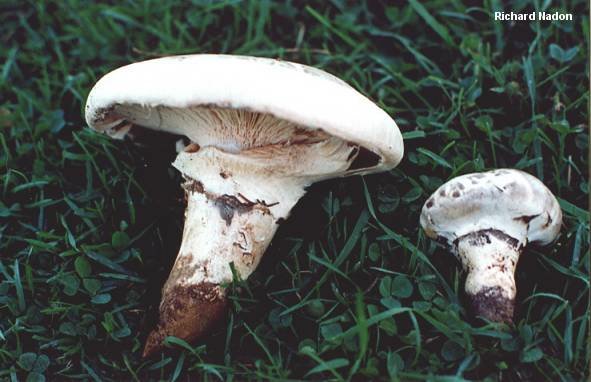
Microscopic examination: spores 9-13 * 4-6 microns, smooth, oblong-elliptical, starchy. Basidia about 45 microns.
Edible: Considered a high quality edible mushroom. In some countries it is of commercial importance. It can be used in any form, it can be boiled, fried, stewed, marinated. Since the mushroom does not have a distinct taste of its own, it is considered an ideal addition to both meat and vegetable dishes. When preparing for future use, it can be dried and frozen.
Similar Species: Catathelasma Imperiale
Description
All four species of Catathelasma are found in North America but only one (C. imperiale) is known in Europe. They are all fairly massive Tricholoma-like fungi, but are distinguished from that genus because they have decurrent gills and (at the microscopic level) because they have amyloid spores and a bilateral gill trama. They are mycorrhizal, growing on the ground under conifers, have a tough consistency, and their stems taper towards the bottom and are often partly buried in the soil. They have prominent veil remnants (two rings, or a ring and a volva).
They all tend to be found in the mountains. In Europe the single species varies in frequency from "quite rare" to "rare".
A rare and expensive type of mushroom - matsutake grows in some areas of Sakhalin
Eastern gourmets buy individual specimens of these mushrooms for several hundred dollars.

Sakhalin. The only place in Russia where you can find a rare species of medicinal mushrooms - matsutake, which are valued by oriental gourmets along with truffles, is located on Sakhalin. Not every islander can pamper himself with them, because they are found in small numbers in rare places on the island.Irina Kaminskaya, an indigenous South Sakhalin woman, agreed to tell SakhalinMedia news agency about these mushrooms on one condition - the place where the matsutake was collected will remain a mystery for the readers.
- Irina Vasilievna, why are people so little aware of matsutaka?
- In Korea, China, Japan, he is well known and appreciated on a par with truffles. In Japan, this type of mushroom grows in centuries-old groves of red pine. Its mycelium forms a symbiosis with its roots. Therefore, they were called matsutake - pine mushroom. The fruit body of a young mushroom is almost entirely in the ground, only the cap is visible. Therefore, when collecting them, you have to dig out like truffles. The leg grows more than 10 cm long. The cap of an adult mushroom grows up to 20 cm in diameter, but still most of it sits in the ground. They are very similar to the Sakhalin mushrooms.
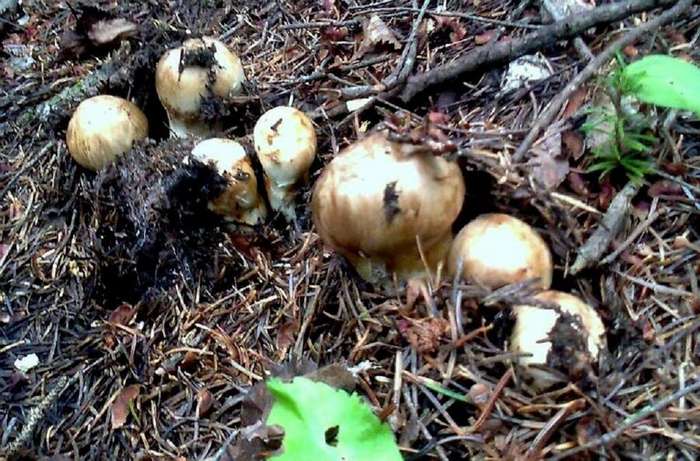
The mushroom picker's happiness is the growth of matsutake. Photo: Yuri Gurshal
- And where do century-old pines grow on our island?
- Nowhere. In general, pine trees are not found in the island nature, they were brought by people. But this mushroom is found in North America, only there it grows in mixed fir-spruce forests. A similar picture is on Sakhalin. There are some places where matsutaki grows on the southwestern coast of the island, where the climate is somewhat warmer than in the rest of the island. There, and the mushroom season begins 2-3 weeks earlier.
- What is this mushroom good for, in addition to its rarity?
- It has an incomparable taste and aroma. The scent of pine resin, cinnamon and something else that is difficult to describe. However, there is a product similar in taste and smell - the Greek white wine Retsina. According to an ancient recipe, during the fermentation of grape must, the resin of the Aleppo pine (pine) is added to it. Matsutaki is highly regarded by mushroom connoisseurs. In Japan, there is even the Iwaizumi Matsutake Shrine, and in the Himalayas in August there is a festival dedicated to the beginning of the matsutake collection.

Harvested matsutake mushrooms. Photo: Yuri Gurshal
- Is it true that they are credited with various healing properties?
- Most mushrooms are medicinal and useful to varying degrees. Matsutake is considered a "royal blood" mushroom in taste and healthiness. They are loaded with potassium, magnesium, folate, lecithin, and ergothioneine. In the east, they are taken to improve immunity, lower cholesterol, prevent cancer and diabetes, and almost all diseases.
- How to cook them?
- As with all selected products, it is important not to spoil them during cooking. Matsutake is very delicate and therefore the less time it is cooked the better.
You can boil a light soup, bake mushrooms in foil, quickly fry in a pan. It's just a matter of taste. The Japanese cook them on the grill with sake. There are also people who like to eat them raw with sauces. For long-term storage, I simply freeze them, but you cannot dry them - all the useful properties and taste will be lost.
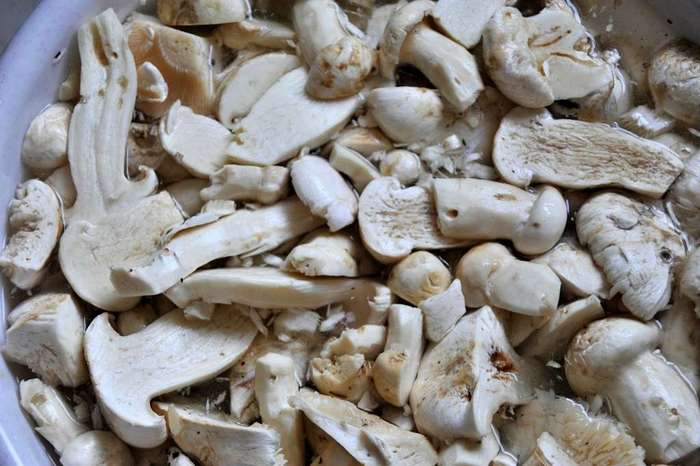
The champignons are ready to go to the freezer. Photo: Yuri Gurshal
-What should all the islanders do who cannot find or get the matsutake?
- There are also mushrooms similar in some properties to matsutaki - the so-called Sakhalin champignons. Only the name unites them with real champignons. This is actually Catathelasma ventricosum. They also have their own unique aroma and taste. Fruit bodies of young matsutaks and Sakhalin mushrooms are similar, they are equally deep in the ground. Massively grow in spruce forests in the area of Vzmorye, Svobodny, Pikhtovoy. They are found in small numbers on the slopes of the hills at a certain height along the south of Sakhalin. Well, and for those who cannot collect - they are sold in the markets from August to October. There are also porcini mushrooms, aspen mushrooms, and boletus - they are all good in their own way.

The three "brothers" are matsutake. Photo: Yuri Gurshal
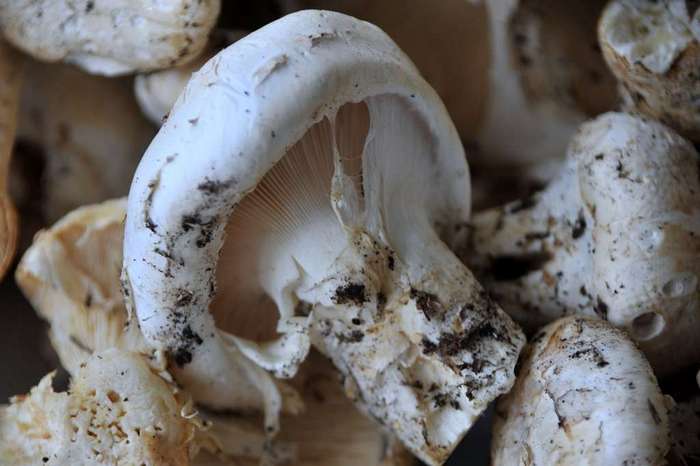
Another champignon. Photo: Yuri Gurshal
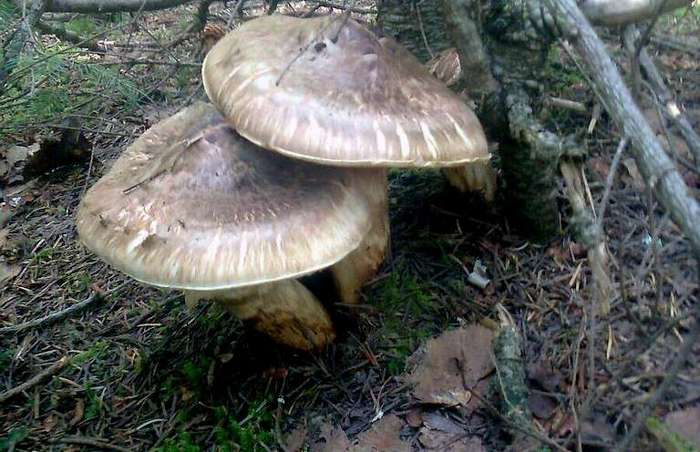
Matsutake mushrooms. Photo: Yuri Gurshal

Aspen mushrooms. Photo: Yuri Gurshal
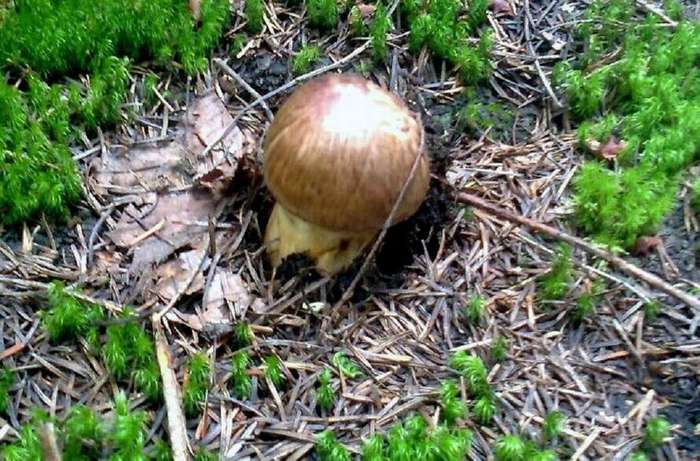
Young matsutake. Photo: Yuri Gurshal
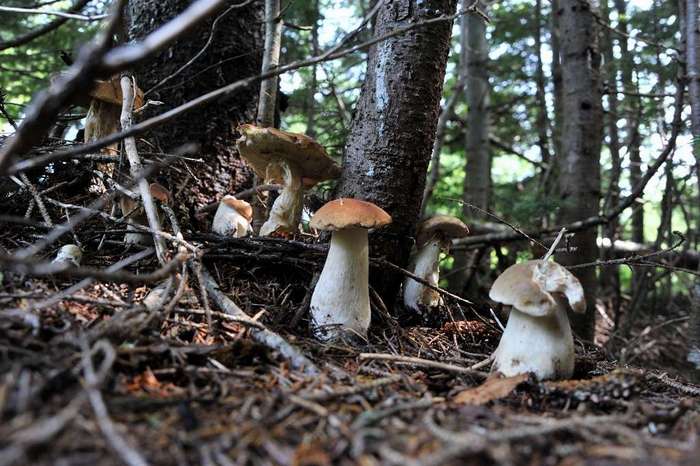
White mushrooms. Photo: Yuri Gurshal
History and naming
The genus Catathelasma was defined by Ruth Ellen Harrison Lovejoy in 1910 based on the type species C. evanescens, which she described as a new species at the same time. In her description she says
According to Genaust's etymological dictionary of botanical names, "Catathelasma" comes from Ancient Greek words "kata" (κατά - downwards) and "thelasma" (θήλασμα - meaning "the act of suckling"). He says that the reason for this construction is unclear, but suggests that the author is comparing the shape made by the gills running down the stem with a teat stretched out during suckling. "Decurrent" means "running down the stem" and another possible connection with Lovejoy's description is that "katatheo" (καταθέω) means "I run down". However it is difficult to see how that could logically give rise to the noun "Catathelasma".
The earlier history of this group of mushrooms took place in Europe. The only European species of the genus was first described in 1845 by Fries under the name Agaricus imperialis... In 1872 Quélet classified it within Armillaria and in 1922 the Austrian botanist Günther Beck von Mannagetta und Lerchenau invented for this single species the separate genus Biannularia, a name which is still encountered in the literature. For a time Catathelasma and Biannularia were regarded as separate (though closely related) genera, as for instance in a 1936 paper by Rolf Singer. Later Singer united the genus using Lovejoy's name.
Imperial catatelasma (Catathelasma imperiale)
Synonyms:
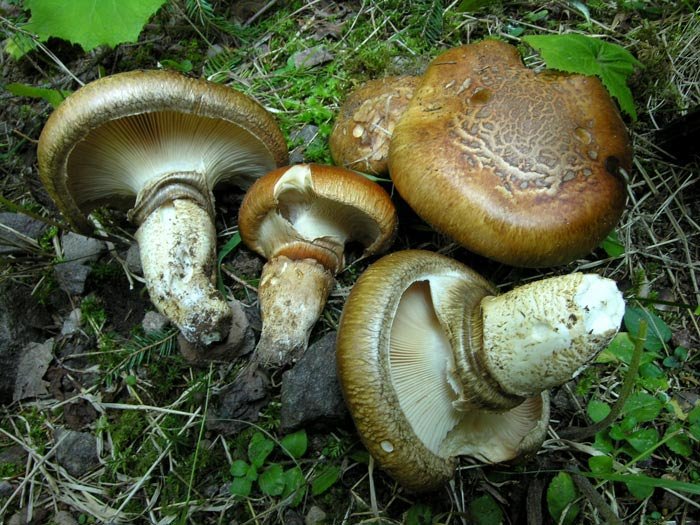
Such a mushroom as Imperial Catatelasma is also called by many an imperial champignon.
Hat: 10-40 cm; in young mushrooms it is convex and sticky, later becomes flat-convex or almost flat and dry; with crumbling fibers or scales. The color is from dark brown to brown, reddish brown or yellowish brown, the surface of the cap often cracks in adulthood.
Plates: Descending, whitish or slightly yellowish, sometimes discolored to gray with age.
Stem: up to 18 cm long and 8 cm wide, tapering towards the base, and usually deeply rooted, sometimes almost completely underground. The color above the ring is whitish, below the ring is brownish. Double ring, hanging. The upper ring is the remains of the bedspread, often wrinkled, and the lower ring is the remains of the common bedspread, which quickly collapses, therefore, in adult mushrooms, the second ring can only be guessed.
Flesh: White, tough, firm, does not change color upon exposure.
Smell and taste: Raw mushrooms have a distinct mealy taste; the smell is strongly mealy. After heat treatment, the taste and smell of flour completely disappear.
Spore powder: White.
The main feature is a rather interesting appearance, as well as an impressive size. While the mushroom is young, it has a yellowish tint. However, when fully ripe, it darkens to brown. The cap is slightly convex and rather thick; it is located on a very powerful stem, which is even too thick and dense at the base of the cap. Imperial catatelasma is smooth, may have small brown spots on the stem and an uneven coloration of the cap.
You can find this amazing mushroom only in the eastern part, in the mountainous areas, most often in the Alps. Locals meet him from July to mid-autumn. This mushroom can be easily eaten in any form. It is quite tasty, without pronounced shades, ideal as an addition to some dish.
Ecology: Presumably mycorrhizal. It occurs in the second half of summer and in autumn alone or in small groups on the ground under coniferous trees. It prefers to grow under the Engelmann spruce and rough-fruited fir (subalpine).
Microscopic examination: Spores 10-15 x 4-6 microns, smooth, oblong-elliptical, starchy. Basidia about 75 microns or more.
Similar species: Swollen catatelasma (Sakhalin champignon), differs from the imperial champignon in slightly smaller size, color and lack of flour smell and taste.

